Section one: The fundamentals
A)
Exercise 1: Notebook Prompt
Many of you are likely familiar with the concept of “ability inequity,” which the authors of this article define as “an unjust or unfair (a) ‘distribution of access to and protection from abilities generated through human interventions’ or (b) ‘judgment of abilities intrinsic to biological structures such as the human body’.”
However, they go on to identify the following “ability concepts” that are less familiar:
1) ability security (one is able to live a decent life with whatever set of abilities one has)
2) ability identity security (to be able to be at ease with ones abilities)
How prevalent are these forms of security among disabled people you know? Or, if you identify as a disabled person, would you say your social surroundings and community foster and support these kinds of security? Furthermore, while the focus of the article is on Kinesiology programs, it is also important to reflect on how academia in general accommodates for disability. If you feel comfortable answering this question, what has been your experience of postsecondary education to date?
-OR-
The authors also observe that “Ableism not only intersects with other forms of oppression, such as racism, sexism, ageism, and classism, but abilities are often used to justify such negative ‘isms’.”
What do you think this means? Provide an example.
The idea that “ableism not only intersects with other forms of oppression” means that people’s abilities are often used as an excuse to treat certain groups unfairly. For example, women in sports have often been seen as not strong enough or fast enough, which has been used to limit their chances in competitions. This combines ableism (judging people’s abilities unfairly) with sexism (treating women as less capable). Another example is in education. Students from poorer backgrounds might struggle because they didn’t have access to good schools or resources. Instead of recognizing these challenges, some people may wrongly assume those students just aren’t smart or capable. In both cases, unfair ideas about ability are used to justify treating certain groups poorly.
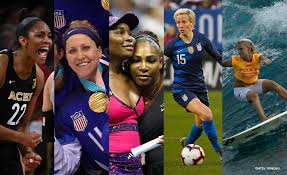
|
Exercise 2: Implicit Bias Test
Did anything surprise you about the results of the test? Please share if you’re comfortable OR comment on the usefulness of these kinds of tests more generally.
My test result showed a “strong automatic preference for Physically Abled People over Physically Disabled People.” At first, I was surprised and questioned the test’s validity. However, after learning how the test works, I realized it measures how quickly people associate certain concepts together. For example, I responded faster when ‘Physically Abled People’ and ‘Good’ shared a button than when ‘Physically Disabled People’ and ‘Good’ did. This made me reflect that, while I consciously believe I treat disabled people equally, I may hold unconscious biases I wasn’t aware of. This experience showed me how valuable these tests can be in revealing hidden attitudes and encouraging personal growth.
|
B) Keywords
Exercise 3:
Add the keyword you contributed to padlet and briefly (50 words max) explain its importance to you.
Crip theory is a way of thinking that challenges how society views disability. It questions the idea that being disabled is only a problem to be fixed and instead sees disability as an important part of identity and culture. For me, this theory is important because it encourages people to value and respect differences rather than seeing them as flaws. It reminds me to be more aware of how social attitudes and barriers can impact disabled people, and it pushes me to challenge those ideas in my own thinking and actions.
|
B) On Disability
Exercise 4: Complete the Activities
Which of the following are NOT defining characteristics of the medical of disability?
- Focus on removing barriers
- Focus on the surrounding environment
Drag the words into the correct boxes
- The social model of disability argues that society disables people by imposing restrictions and barriers and through attitudes that exclude disabled people from full participation in society. As such it focuses on disabling environments rather than impairments.
Fill in the missing words
- the social model focuses on removing disabling barriers instead of medical intervention.
Exercise 5: Notebook Prompt
What do Fitzgerald and Long identify as barriers to inclusion and how might these apply to sport in particular?
Fitzgerald and Long identify several barriers that make it harder for disabled people to take part in sport. Physical barriers, like a lack of accessible facilities or adapted equipment, can prevent participation. Social barriers, such as negative attitudes or stereotypes, may cause disabled people to feel unwelcome in sports settings. There are also organizational barriers, where sports programs often focus more on competition and less on creating inclusive opportunities. These challenges can make it difficult for disabled athletes to access training, join teams, or feel accepted. To improve inclusion, it’s important to create accessible spaces, offer adapted programs, and promote positive attitudes toward disabled athletes.
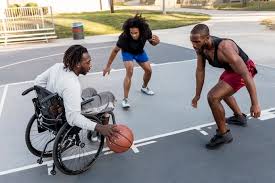
C) Inclusion, Integration, Separation
Exercise 6: Complete the Activities
Which of the following is premised on the social model of disability?
Exercise 7: Notebook Prompt
Choose ONE of the three questions Fitzgerald and Long argue disability sport needs to address and record your thoughts in your Notebook.
- Should sport be grouped by ability or disability?
- Is sport for participation or competition?
- Should sport competitions be integrated?
Should sport competitions be integrated?
I think integrating sport competitions can be beneficial, but it depends on how it is done. Inclusion is important because it allows disabled and non-disabled athletes to compete together, breaking down barriers and reducing stigma. It can also create more opportunities for disabled athletes to be recognized and supported. However, integration must be done in a way that ensures fairness.
Some sports, like wheelchair basketball, already allow able-bodied players to compete, showing that integration can work. However, in other sports, mixing disabled and non-disabled athletes may create unfair advantages or disadvantages. For example, a track race that includes runners with and without prosthetics might raise concerns about different performance levels. To make integration fair, sports organizations would need clear rules and adjustments so that all athletes have a fair chance to compete.
While full integration may not always be possible, finding ways to bring disabled and non-disabled athletes together—through mixed training, combined events, or unified teams—could help create a more inclusive sports environment.
|
Part Two: Making Connections
A) Gender, Sport and Disability
Exercise 8: Complete the Activity
The paradox that sportswomen habitually face (as the authors observe, this isn’t confined to disabled sportswomen) involves the expectation they will be successful in a ‘masculine’ environment while complying with femininity norms in order to be recognized as a woman.
True or false?
Take a moment to reflect on this paradox below (optional).
TRUE,
This paradox means that sportswomen are expected to succeed in a space that is traditionally seen as “masculine” because of its focus on strength, competition, and aggression. At the same time, they are pressured to maintain traditional ideas of femininity, such as being graceful, attractive, or modest, to be accepted as women.
For example, female athletes are often judged not just on their performance but also on their appearance, outfits, or behavior. In some sports, women feel pressured to wear revealing uniforms or act a certain way to gain media attention and sponsorships. Meanwhile, if they appear too strong or aggressive, they may be criticized for not being “feminine enough.” This creates a no-win situation where female athletes must constantly balance between being tough competitors and fitting into gender expectations.
This challenge is even greater for disabled sportswomen, who may also face ableist ideas about what a woman “should” look like or be capable of. Society often views disabled women as less feminine, and if they succeed in sports, they may be seen as even further from traditional gender norms.
Overall, this paradox makes it harder for women in sports to be judged fairly based on their skills alone, showing that gender expectations still shape the way people view female athletes
|
B) Masculinity, Disability, and Murderball
Exercise 9: Notebook/Padlet Prompt
Watch the film, Murderball and respond to the question in the padlet below (you will have an opportunity to return to the film at the end of this module).
The authors of “Cripping Sport and Physical Activity: An Intersectional Approach to Gender and Disability” observe that the “gendered performance of the wheelchair rugby players can…be interpreted as a form of resistance to marginalized masculinity” (332) but also point out that it may reinforce “ableist norms of masculinity.” After viewing the film, which argument do you agree with?
a) Murderball celebrates a kind of resistance to marginalized masculinity
b) Murderball reinforces ableist norms of masculinity
c) Murderball does neither of these things
d) Murderball does both of these things
Explain why in your notebook:
I would choose d) Murderball does both of these things.
The film Murderball showcases wheelchair rugby players as strong, competitive, and aggressive athletes, challenging stereotypes about masculinity and disability. This can be seen as a form of resistance to marginalized masculinity, where disabled men are often perceived as weak or incapable. The players’ raw physicality and intense drive challenge those norms, asserting that disabled individuals can embody traditionally “masculine” traits like toughness and aggression.
However, the film also reinforces ableist norms of masculinity. The players often emphasize their desire to be seen as “normal” and “tough,” which can suggest that being disabled is something to overcome, rather than something that is simply a part of who they are. This focus on toughness as a form of masculinity might unintentionally suggest that disabled bodies need to be strong and able in the same way as non-disabled ones to be valued or respected. This could perpetuate ableism by reinforcing the idea that masculinity is defined by physical ability.
In my view, the film does both: it resists some stereotypes about disabled masculinity while still being shaped by the norms of able-bodied masculinity.
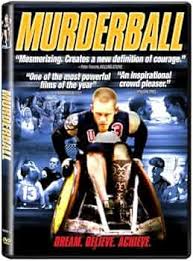
|
Section Three: Taking a Shot
A) Resistance
B) Calling out Supercrip
Exercise 10: Mini Assignment (worth 5% in addition to the module grade)
1) Do you agree with the critique of the “supercrip” narrative in this video? Why or why not? Find an example of the “supercrip” Paralympian in the 2024 Paris Paralympics or Special Olympics coverage and explain how it works.
I agree with the critique of the “supercrip” narrative in the We’re the Superhumans video. While the video is exciting and positive, it focuses too much on showing disabled people doing amazing things. This can send the wrong message — that disabled people must achieve incredible success to be seen as valuable or inspiring. The “supercrip” idea suggests that disabled people are special only when they do something extraordinary, like winning medals, performing on stage, or breaking records. This can be harmful because it makes people forget that disabled individuals are valuable just for being themselves, no matter what they achieve.
An example of the “supercrip” narrative can be seen in some 2024 Paris Paralympics coverage. For example, stories that focus more on an athlete’s disability than their hard work and skills can reinforce this idea. If an athlete’s success is mainly described as “overcoming” their disability rather than being the result of training, strategy, and effort, it shifts the focus away from their real achievements. While these stories may seem positive, they often make disabled people seem like heroes just for living their lives, which can feel unfair and unrealistic.
The problem with the “supercrip” narrative is that it creates pressure for disabled people to always prove themselves in ways that non-disabled people don’t have to. It suggests that being “normal” isn’t enough — they must go above and beyond to gain respect. While celebrating achievements is important, we should also value disabled people for their everyday experiences, choices, and contributions.
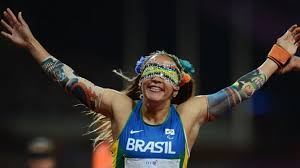
|
2) Does the film Murderball play into the supercrip narrative in your opinion? How does gender inform supercrip (read this blog for some ideas)?
(300 words for each response)
I think Murderball does play into the “supercrip” narrative in some ways, even though it also challenges stereotypes about disability. The film presents wheelchair rugby players as strong, aggressive, and competitive, which pushes back against the common belief that disabled people are weak or dependent. However, it also focuses a lot on their ability to “overcome” their disabilities and prove their worth through extreme toughness, which fits the supercrip idea.
The supercrip narrative suggests that disabled people must achieve something extraordinary to be respected or valued. In Murderball, the athletes are shown as pushing themselves to the limit, reclaiming their independence, and proving that they are just as tough—if not tougher—than non-disabled athletes. While this can be inspiring, it also reinforces the idea that disabled people must be exceptional to gain recognition. It risks sending the message that being an “ordinary” disabled person isn’t enough and that worth is tied to overcoming disability rather than just living with it.
Gender plays a big role in how the supercrip narrative appears in Murderball. The athletes strongly embrace traditional masculinity—being aggressive, competitive, and emotionally guarded. This helps them resist stereotypes of disabled men as weak or dependent, but it also limits how disabled masculinity is viewed. The film suggests that to be respected, disabled men must prove they are still “real men” by being physically dominant and aggressive.
This connects to the blog’s argument that the supercrip narrative pressures disabled people to constantly prove themselves. Instead of showing disability as a normal part of life, it presents success as needing to be “superhuman.” Murderball challenges some stereotypes but still reinforces the idea that disabled athletes must go above and beyond to be valued.
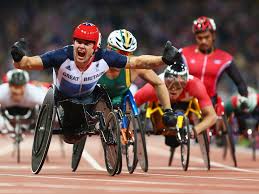
|






